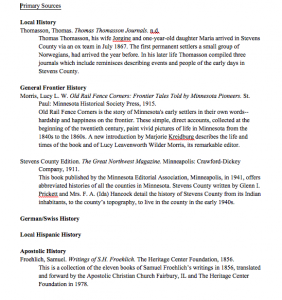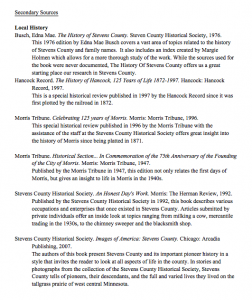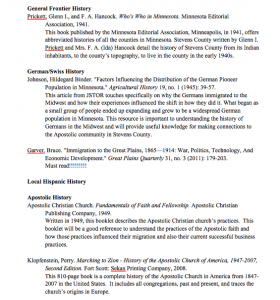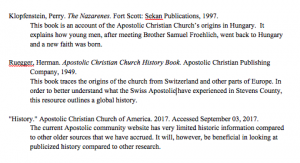Amy and I are exited to publish our Project Contract both on our blogs and on the website!
Special thanks for Professors Alvis Dunn and Leland Turner for their support and critiques.
Amy and I are exited to publish our Project Contract both on our blogs and on the website!
Special thanks for Professors Alvis Dunn and Leland Turner for their support and critiques.
Amy and I spent today’s meeting organizing ourselves and gawking over our beautiful website. Our goals were
Because my dear partner Amy went a little crazy with web design over the weekend, we actually skipped 1-3 and got straight to a site check up! All her hard work really paid off! We edited our introductory welcome page which states our goals and made sure that it was consistent with what we put on the contract. We are currently looking at different ways to organize content and make the site as user friendly as possible while still leaving plenty of room to add all the information we need.
After finishing our goals, we finalized our contract and organized all of our dates. We reviewed all of the jobs that need to get done and the roll that both Amy and I will take in the production of the site. Because Amy is very technologically advanced, very organized, and taking 10 less credits than me this semester, I have trusted her with the majority of the work in regards to web design and details. I will focus on editing content and ensuring that the site conveys the message that we have agreed on. Amy and I have worked on other digital projects together and I am confident that our teamwork and personal styles will produce a beautiful and educational resource for Morris and all of Stevens County to enjoy.
We began discussing a few more Latino resources that we want to look at more specifically. One of which is a project by U of M Morris Professors, Stacey Aronson and Windy Roberts called, “History of the Latino Experience in the Morris Area.” This resource is housed in the Center for Small Towns and I should gain access to it by Wednesday or Thursday morning. I love that a lot of our local history is housed right here at the University and also at the Historical Society.
We didn’t get too far into discussing our plan for oral histories/ interviews/ meetings with local historians, but instead had a really good talk about what we want out of this project and how we’re going to accomplish it. We want to shed a new light on history here in Morris and talk about what that means for our community. We want to show that people, no matter where they are from or how long they’re living somewhere, deserve to feel like they are at home. We want to influence the way discussions on immigration and migration are conducted in Morris and Stevens County. We want to use this research as a platform to make a change in our community.
Below you can find the first draft of our contract:
Today, Amy and I met with Stephan Gross who is the Archive Director and Associate Professor of History to discuss some different perspectives on our project. I thoroughly enjoyed our conversation with Professor Gross, because he was able to narrow our interests in some ways and expand our research searches. When we were discussing the similarities between the Apostolic community and the Latino’s assimilation patterns, Gross mentioned that “no one fully assimilates.” This is interesting because assimilation is a very important part of the rhetoric around Immigrant and migratory groups. This is bread from what I believe is a nativist perspective that values some cultures over others. But when it comes to Minnesota and Minnesotans, many have agreed that we are people who, “work hard and honor our families.” When Professor Gross brought up this notion, I was intrigued to hear that all of his “research” on this concept was strictly out of oral history and could be found in everything from Ole and Lena jokes to state political rhetoric. Midwesterners are known for being very connected to their roots and the idea of “chain migration” was brought up. I had very little background knowledge on the idea of chain migration and was even more interested to know that the Apostolic church sent scouts to the area to check if there was plentiful land and positive prospects. The last word that Steven had for us was that we have become “so infatuated with difference that we stopped looking at what has [has connected and] connects us.” This final idea left me inspired and excited to continue pursuing this project with more and more focus.
I believe that we have done a great job of searching through sources and finding a good number of sources that hold a different emphasis and touch on specific factors that have impacted migration in the world, Midwest, and Stevens County. We will be taking these sources and compiling a list of questions that address the immigration process, family structure, language, customs, and assimilation.
We are looking forward to working with these sources, editing the annotations, and adding more to this list.
Google Docs link to Annotated Bibliography




As I have mentioned on a previous page, my partner, Amy and I are focusing in on Stevens County. This small western county of Minnesota is made up of multiple towns and townships. Morris, the county seat on the eastern edge of the county, is where a University of Minnesota campus can be found. Due to the university, there is a huge demographic of young adults throughout the school year and there is a sizable portion of the area that works on campus. The campus, however, is very separate from the community of Morris and the surrounding area.
For this research. Amy and I want to examine Stevens County and explore ideas of migration and community from outside of the college block. That being said, we are fully aware that the rich history, abundant resources, and invested faculty that the campus provides will be vital to us.
In order to influence the greatest change and best represent Stevens County, our goal is to relate the contemporary migration story of the Latino population in the area and the influential apostolic community that has been present since the inception of Stevens County as a community. Many apostolic families have stayed in Stevens County and much of the industry is a result of their settlement. The increasing Latino population, however, is often seen as a direct correlation to these industries. We will be coming the settlement of the apostolic community and the migration patterns of Latinos in Stevens county in order to draw some conclusions on how similar and/or different their experiences have been. Stevens County, although in what some may describe as the middle of no where, is full of history, culture, and people that deserve to be brought to light and examined.
Amy and I have taken major steps to exploring Stevens County resources and through the University as well as the community, we have ran into many sources! Who knew that there was so much about such a small community? Originally we didn’t even know where to begin but knew that we wanted to make an impact on the people that have been and are currently here.
We have a large variety of archival resources at UMM and even more at the Stevens County Historical Society. There is also more information at the Minnesota Historical Society that I am excited to explore when back in the Twin Cities. Probably most important to our current research, are the primary sources available through the Apostolic community in Stevens County. Amy even called me after she discovered that a Church historian will be visiting Morris to talk about the history of the Apostolic Church. Amy even has a book that he has published!
Along with a meeting with the Church historian, we will also be having more meetings with the Director or Archives at the university and the historians at the Historical society. We have talked about using our connections within our community to contact and form stronger ties with potential resources! I love learning from individuals who have been around Morris and Stevens County for a long time and I am very grateful that Amy and her family have a rich history here. Between the two of us we have connections in the community, the school, the churches, and even in the Twin Cities. We have been reaching out to more and more people while also doing research online through our archives. There is most definitely a lot of information and I am excited to dive deeper in order to better understand and better represent our community!
Goodman. “Nation of Migrants, Historians of Migration.” Journal of American Ethnic History, vol. 34, no. 4, 2015, p. 7., Accessed 27 Aug. 2017.
In his article, Adam Goodman lays out a few clear reasons as to why the intentional way in which The United States has created an identity as a nation of immigrants and perpetuated it through education is an inadequate historical representation of who we are as America. His main arguments stem from the fact that US National Identity has been cultivated and intentionally designed to use words such as “immigrant,” “melting pot,” “assimilation,” all to attempt to recognize diversity in America’s growth as a nation. These words are problematic, however, by not including migratory patterns, native people groups, and any type of cultural preservation. Throughout the article, Goodman notes how important words are both in fields of study and to individuals. He also notes that in the midst of reevaluating the United State’s history of immigration, we must also acknowledge that the subject matter is not solely historical but also political, cultural, social, and economical. Even though there are many different reviews/articles/journals/studies written on immigration and migration, I think one clear point that Goodman makes is that one way migration- those that would most likely be defined as immigrants– is valued in America more than any other migratory flow. This is a dangerous line however because much like legal status or personal identity, National identity is not fixed and entire groups or nations (Goodman specifically mentions Sweden and Mexico while also alluding to the US) will not be either.
I think that as we take a migration-based approach to our research, we have even recently seen that Native American groups are migratory and have been excluded throughout our preliminary research. Similarly, the large apostolic population here migrated from Illinois and Iowa. We will continue looking into why people moved but also want to investigate what type of role the Midwest in general has played in the Nation’s migratory history. Towards the end of the article, Goodman notes that deep and difficult research is “essential to understanding the experiences, motivations and decisions of migrants, and their diverse reasons for migrating.” I believe that keeping this type of interdisciplinary mindset on hand will greatly benefit our research throughout the semester.
Some Questions and Ideas to further my research:
What is American Exceptionalism? How does “us vs. them” mentality play into that?
Define: temporal, geographic, and political boundaries
Native American’s were excluded for much of America’s history as a migratory group, but there are many ethnic groups dispersed throughout America. Have these different groups been taken into consideration in a different way? What factors allow(ed) for some Native groups to be privileged over others? How can we take Stevens County’s rich Native American History into account during this project?
Throughout my various research topics I have found that it is important to make sure that the audience fully understands the terms being used. While the article was articulate, well organized, and informative, I believe that there is always room for more definitions. Especially in the beginning of a semester and the start of a new project, terms like “citizen,” “naturalization,” and “immigration” ought to be defined. So according to webster dictionary, here’s what I’ve got:
Citizen:
one entitled to the rights and privileges of a freeman
a member of a state : a native or naturalized person who owes allegiance to a government and is entitled to protection from it.
a civilian as distinguished from a specialized servant of the state.
Naturalization:
to confer the rights of a national on: to admit to citizenship
to introduce into common use or into the vernacular
to cause something to become established as if native
Immigrant:
1. a person who comes to a country to take up permanent residence.
I really enjoyed the review of naturalization laws and changes, many of which I didn’t fully know of understand and I look forward to continuing to learn more throughout the semester and hear what stuck out to each of us as peers and colleagues.
Welcome to my blog for Cultural Crossroads!
I am super excited to begin this course because I’ll be able to explore my community in a new way and learn more about Morris while also exploring the realm of online/digital learning. I have taken many online courses in the past, but none with this type of class set up. I am anxious to see how all the various forms of media usage will work together to become a project.